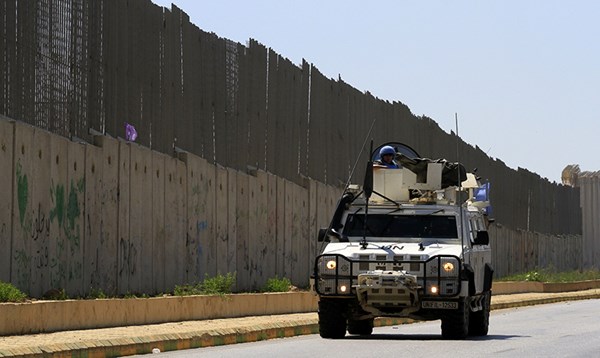Border security in the 2020s will certainly continue to be a hot topic around the world as governments seek to address such diverse, interconnected challenges, such as attacks by insurgent groups; flows of illegal and irregular migrants, including by human trafficking; the spread of pandemic disease; and the smuggling of arms and illicit goods. The nature of the challenge depends on the region, but it is clear that there is hardly a country in the world not impacted by at least one of these problems.
Obviously, there is no ‘one size fits all’ solution for securing borders; in addition to the diversity of challenges, every situation is unique due to differing topography, weather, population dynamics, economic conditions, infrastructure, and many other factors. Addressing smuggling in a region like West Africa – with poorly demarcated borders that are easily crossed and populations that straddle them – takes a vastly different approach than along a mountainous, sparsely populated region like the Lebanon-Syria border.
However, at Burnham Global, we believe that there are principles that, if properly adhered to by border security forces, can prove effective in mitigating challenges. Having operated along some of the world’s most dangerous international borders for over a decade – training and advising a range of governments – we have developed our ‘intelligent borders’ concept to take into account the numerous lessons we have learned, and to operationalise them. This approach includes:
Understand root causes
Providing an ‘intelligent’ solution depends first and foremost on a deep understanding of the problem at hand. In journalistic parlance, this means being able to address the ‘who, what, when, where, why, and how’ of the issue. Imagine a government is trying to crack down on an inflow of illicit cigarettes; having a tactical understanding of who is doing it and the routes they take is key, but so are such questions as the identity of buyers inside the country, what larger smuggling networks this feeds (such as human trafficking), and whether officials in the neighbouring country are complicit. Thus, our first step in implementing an intelligent border solution starts with a detailed baseline study that can identify intelligence gaps and help the host government properly frame the problem at hand.
Assess the operating environment
In addition to understanding the drivers of border challenges, one must understand the capabilities of the force (or forces) tasked with carrying out security operations. We begin by carrying out an ‘understand’ phase that gives us a clear picture of the operational environment. In conjunction with the host nation, we then develop a Mission Essential Task List, which forms the basis for our Training Needs Analysis and Equipment Needs Analysis. Once these are complete, we can agree on a plan with the recipients and, where appropriate, donors funding the project work.
Emphasise simple solutions
Border security technology – sensors, radars, drones, and so on – are big business right now. This is for good reason, as they can be effective force multipliers. However, an overreliance on technology is dangerous, particularly in border environments that tend to be remote and rugged; if a sensor breaks in the middle of nowhere, fixing it can be both costly and time-consuming. Thus, in general, we have found that the most effective (and cost-effective) border solutions emphasise the human element, particularly mobile patrols by border forces. So we take great pains to ensure that these forces have the right training and equipment to properly conduct them.
Build appropriate infrastructure
The physical infrastructure for border security, particularly in remote areas, can be prohibitively expensive, and often of limited utility. Walls, for example, can work in certain instances over short stretches of terrain, but they are generally ineffective, costly, and not a solution unto themselves. Hence, we work closely with border forces to help them determine what sorts of infrastructure are most appropriate, dependent on the topography or the nature of the threat. In Lebanon, we have found that forward operating bases and observation posts along the border work to great effect in countering an insurgent threat in mountainous terrain, but in other environments a different approach is necessary.
Prepare for multiple challenges
In our experience, border security often fixates on one challenge – say insurgent attacks – but de-emphasises others, even when they are present. For example, forces on a high state of readiness for attacks may be less mindful of goods smuggling, even though the illicit movement of goods could be funding insurgent activity. Burnham Global ensures that border forces are well aware of the universe of threats they face, working with them to develop intelligence collection and analysis capabilities necessary to address them. This includes training on positively engaging with border communities and respecting human rights.
Monitor and evaluate constantly
Border challenges are constantly evolving; an insurgent threat one day could morph into a smuggling challenge the next, or different communities could come under threat. Only by continually monitoring the situation through strong intelligence collection and evaluating the effectiveness of responses can a border force ensure that its efforts are effective. Burnham Global emphasises the need for strong Monitoring, Evaluation, and Learning (MEL) in all of our border projects, conducting MEL evaluations ourselves, as well as teaching host nation forces how to conduct them.
Mentor for sustainable success
Short-term training provides recipients an overview of the skills we seek to impart, but it does not leave enough time to master them. Our experience is that long-term mentoring – remotely or, preferably, on the ground – is necessary to ensure that our training becomes ingrained within the standard operating procedures and culture of border forces.

